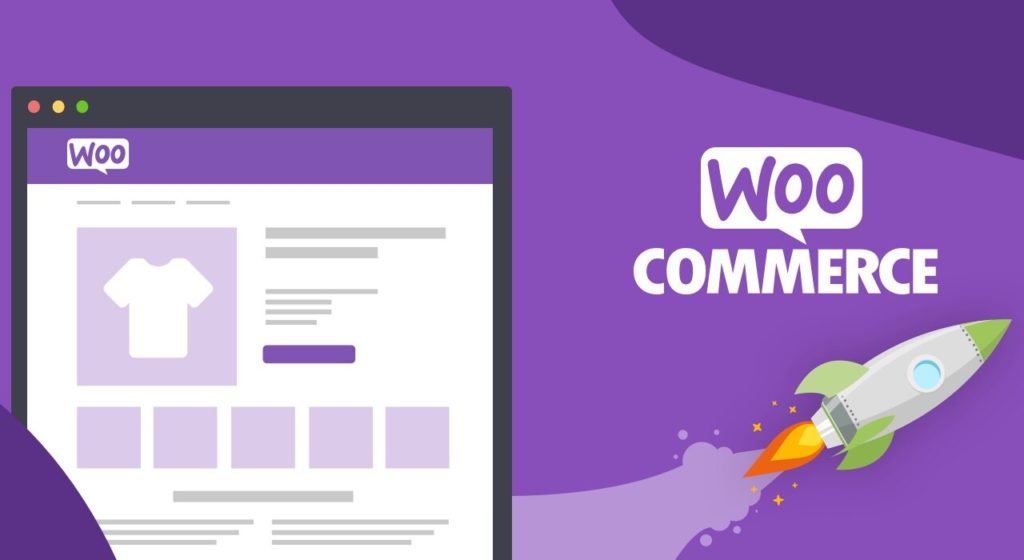E-commerce has revolutionized the way businesses operate, and online transactions have become a fundamental aspect of modern commerce. With the rise of online shopping, businesses are now presented with an array of e-commerce platforms to choose from. Two of the most popular e-commerce platforms are WooCommerce and Shopify. WooCommerce is an open-source e-commerce plugin for WordPress, powering over 30% of online stores. Shopify, on the other hand, is a SaaS e-commerce platform that hosts over a million businesses. In this blog, we will compare WooCommerce and Shopify, outlining their features, functionalities, ease of use, support and resources, cost, and customization options. By the end of the blog, businesses will have a better understanding of the two platforms, which will enable them to make an informed decision on which platform to choose for their e-commerce needs.
WooCommerce
WooCommerce is an open-source e-commerce plugin that is used with WordPress. It is free to download and use, and it powers over 30% of online stores worldwide. The platform offers a range of features, including an intuitive checkout process, unlimited products, customizations, and support for multiple payment gateways. Here is a closer look at WooCommerce:

A. Overview
WooCommerce is a free open-source e-commerce plugin designed for WordPress. It was launched in 2011 and has since grown to become one of the most popular e-commerce platforms worldwide. WooCommerce is free to download and use, but users will have to pay for web hosting, domain registration, and additional features, such as premium themes and extensions.
B. Features And Functionalities
WooCommerce has an array of features and functionalities, including an intuitive checkout process, unlimited products, and support for multiple payment gateways. It has a vast selection of plugins and extensions that enhance its functionality, such as shipping and tax calculators, product reviews, and upselling tools. WooCommerce has several customization options, including the ability to change the layout, fonts, and colors of the website.
C. Pros And Cons
- Flexibility: One of the significant advantages of WooCommerce is its flexibility. As an open-source platform, it allows for a high level of customization and control over the website’s design and functionality.
- Cost-effectiveness: WooCommerce is free to download and use, which makes it an affordable ecommerce solution for businesses.
- Integration with WordPress: WooCommerce integrates with WordPress, which means users can benefit from the vast range of plugins, themes, and resources available on the WordPress platform.
- Technical knowledge required: Setting up and managing a WooCommerce store requires some technical knowledge, which may be a challenge for beginners.
- Can be slow: WooCommerce can be slow, especially when it comes to page loading times. This can impact user experience and SEO rankings.
D. Cost And Pricing
WooCommerce is free to download and use. However, users will have to pay for web hosting, domain registration, and additional features such as premium themes and extensions.
E. Ease Of Use
WooCommerce can be challenging to set up, especially for beginners. However, once users become familiar with the platform, it becomes easier to navigate and manage.
F. Support And Resources
WooCommerce has an active community of users who provide support, resources, and updates. Users can access support and resources through the WooCommerce website, the WordPress community, and various forums and blogs.
WooCommerce is a flexible, cost-effective, and customizable e-commerce platform. It has an array of features and functionalities, including an intuitive checkout process, unlimited products, and support for multiple payment gateways. However, it requires some technical knowledge to set up and manage, and it can be slow.
Shopify

Shopify is a popular SaaS (Software as a Service) e-commerce platform that hosts over a million businesses worldwide. It is an all-in-one platform that offers users a range of features, including web hosting, SSL security, and a user-friendly interface. Here is a closer look at Shopify:
A. Overview
Shopify is a popular SaaS e-commerce platform designed to help businesses set up and run online stores. It was launched in 2006 and has since grown to host over a million businesses worldwide. Shopify is a subscription-based service, which means users pay a monthly fee to access its features and functionalities.
B. Features And Functionalities
Shopify has an array of features and functionalities, including web hosting, SSL security, and a user-friendly interface. It offers a range of built-in tools and features, such as abandoned cart recovery, shipping rate calculators, and product management tools. Shopify has a vast selection of third-party apps and plugins that enhance its functionality, such as product reviews and social media integration.
C. Pros And Cons
- User-friendly: Shopify is known for its user-friendly interface, making it easy for beginners to set up and manage an online store.
- Scalability: Shopify is highly scalable, making it suitable for businesses of all sizes.
- Built-in features: Shopify offers a range of built-in features, such as web hosting, SSL security, and abandoned cart recovery, which makes it a convenient all-in-one platform.
- Cost: Shopify can be costly, especially for businesses with a limited budget.
- Customization: Shopify’s customization options are limited compared to WooCommerce, which may be a disadvantage for businesses looking for a highly customizable platform.
D. Cost And Pricing
Shopify is a subscription-based service, and users pay a monthly fee to access its features and functionalities. The monthly fee ranges from $29 to $299, depending on the plan selected.
E. Ease Of Use
Shopify is known for its user-friendly interface, making it easy for beginners to set up and manage an online store.
F. Support And Resources
Shopify has an active support team that provides assistance to users via email, phone, and live chat. Users can also access a range of resources, such as tutorials, webinars, and forums.
Comparison

Now that we have explored the features and functionalities of WooCommerce and Shopify, let’s compare the two e-commerce platforms side by side:
Cost And Pricing
- WooCommerce is free to download and use, but users will have to pay for web hosting, domain registration, and additional features such as premium themes and extensions.
- Shopify is a subscription-based service, and users pay a monthly fee to access its features and functionalities. The monthly fee ranges from $29 to $299, depending on the plan selected.
Flexibility And Customization
- WooCommerce is an open-source platform that offers a high level of customization and control over the website’s design and functionality.
- Shopify’s customization options are limited compared to WooCommerce, which may be a disadvantage for businesses looking for a highly customizable platform.
Ease Of Use
- Shopify is known for its user-friendly interface, making it easy for beginners to set up and manage an online store.
- WooCommerce can be challenging to set up, especially for beginners. However, once users become familiar with the platform, it becomes easier to navigate and manage.
Scalability
- Shopify is highly scalable, making it suitable for businesses of all sizes.
- WooCommerce is also scalable but may require some technical expertise to handle larger stores.
Features And Functionalities
- Both platforms offer a range of features and functionalities, including an intuitive checkout process, unlimited products, and support for multiple payment gateways.
- WooCommerce has a vast selection of plugins and extensions that enhance its functionality, such as shipping and tax calculators, product reviews, and upselling tools.
- Shopify offers a range of built-in tools and features, such as abandoned cart recovery, shipping rate calculators, and product management tools.
Support And Resources
- Both platforms offer users access to support and resources, such as tutorials, webinars, and forums.
- WooCommerce has an active community of users who provide support, resources, and updates.
- Shopify has an active support team that provides assistance to users via email, phone, and live chat.
Conclusion
In conclusion, both WooCommerce and Shopify are powerful e-commerce platforms that offer unique features and functionalities to businesses of all sizes. WooCommerce is an open-source, highly customizable platform that requires some technical expertise to set up and manage, while Shopify is a user-friendly, all-in-one platform that is highly scalable and offers a range of built-in features. The choice between WooCommerce and Shopify ultimately comes down to the specific needs of the business and its budget. If the business needs a highly customized and flexible platform and has the technical expertise to manage it, then WooCommerce may be the better choice. However, if the business requires a user-friendly, all-in-one platform with built-in features and support, then Shopify may be the way to go. In any case, both platforms offer a range of support and resources to help businesses succeed in the world of e-commerce. So, the key is to research and compare the features and pricing of both platforms to make an informed decision that suits the business’s specific needs and goals.







